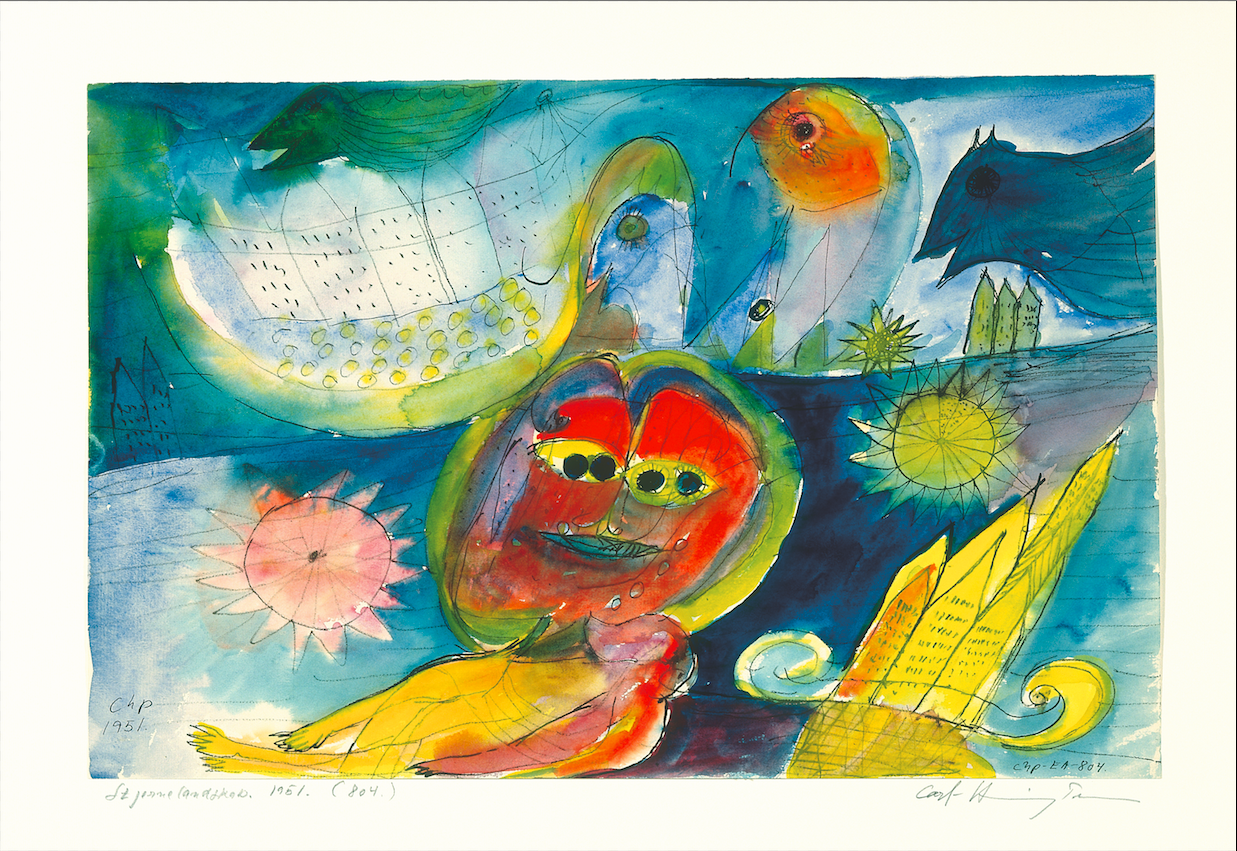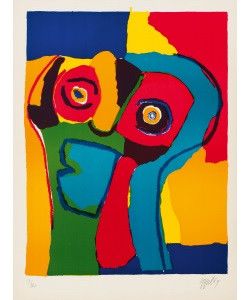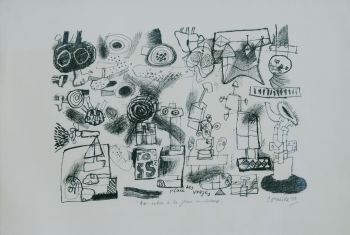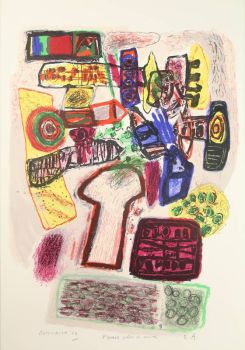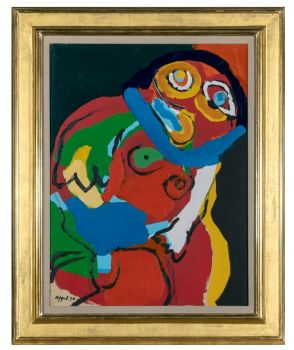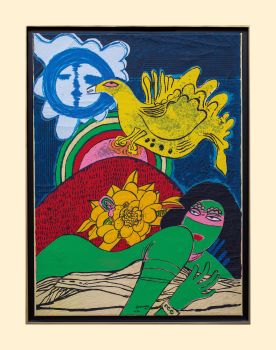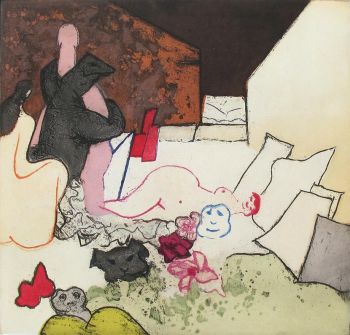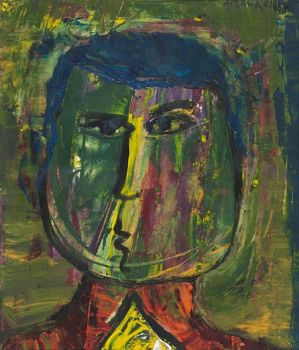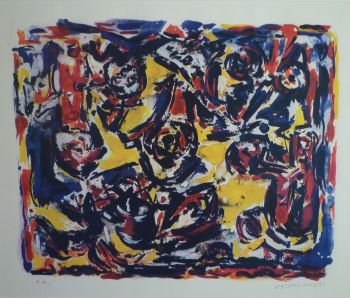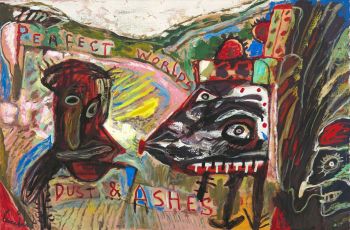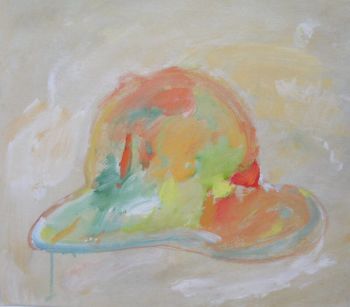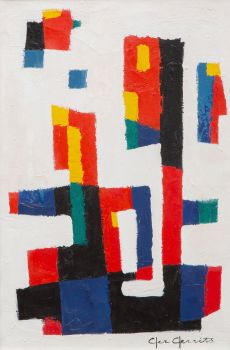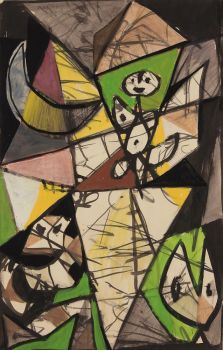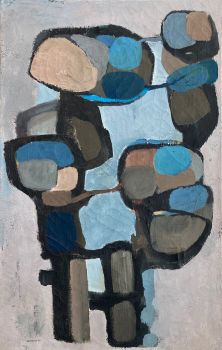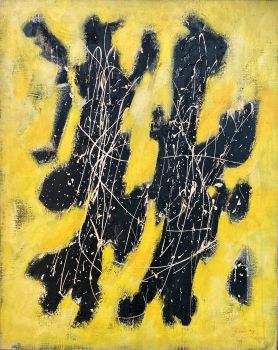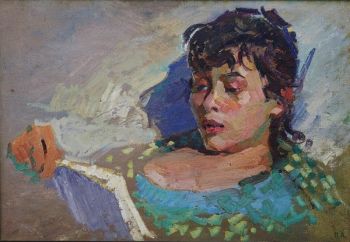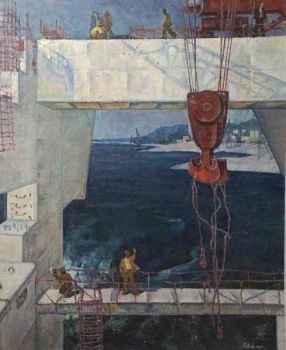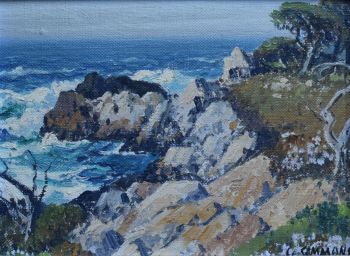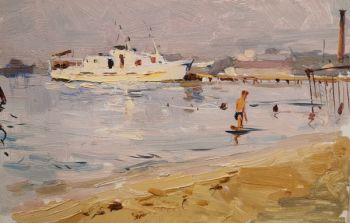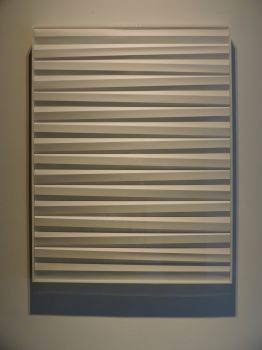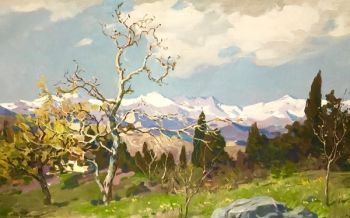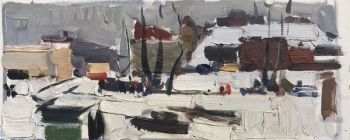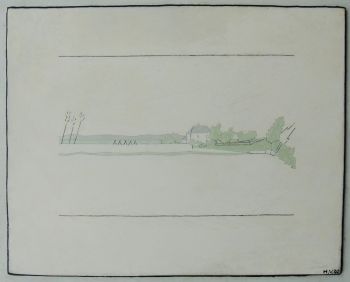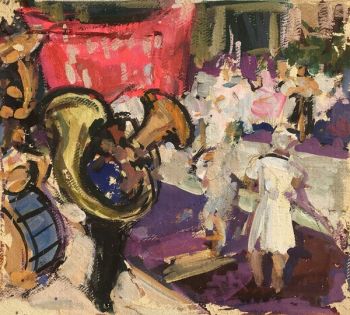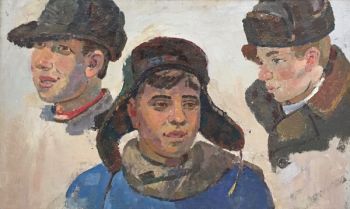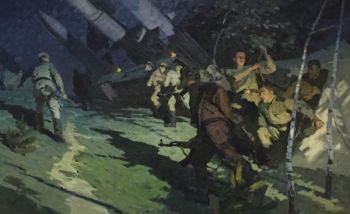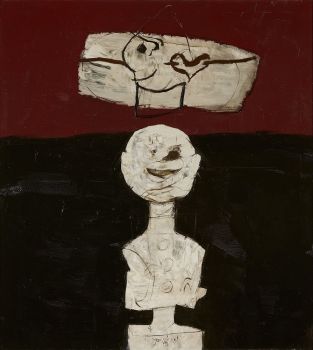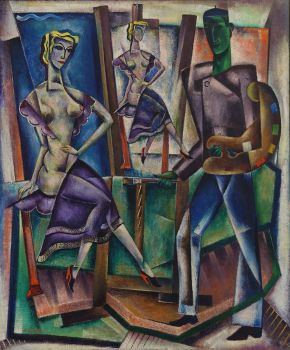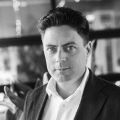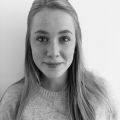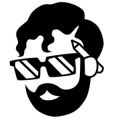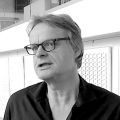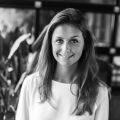At the end of the 1940s, the first 'Cobra art-expressions'; caused great commotion. The newspapers talked about 'tampering, clattering and slandering'. But in the meantime, the then revolutionary Cobra art has conquered a prominent place in European art history. In this article we provide more insight into the origin of Cobra art, the starting points and what the typical characteristics of Cobra art are. We also indicate where you can nowadays view and buy original Cobra art.
Origin of the Cobra movement
On November 8, 1948, the Cobra movement was officially founded in Paris by an international group of young, experimental painters. As a result of the horrific time during World War II, it was inevitable that there would arise a counter-reaction in the form of 'joy, spiritual and artistic freedom and spontaneity'. Cobra was founded as an international movement of young, progressive artists mainly from Denmark, Belgium and the Netherlands. The name CoBrA was based on the names of the capitals of those countries: Copenhague, Bruxelles and Amsterdam. All this written in French, because French was the official language of the movement.
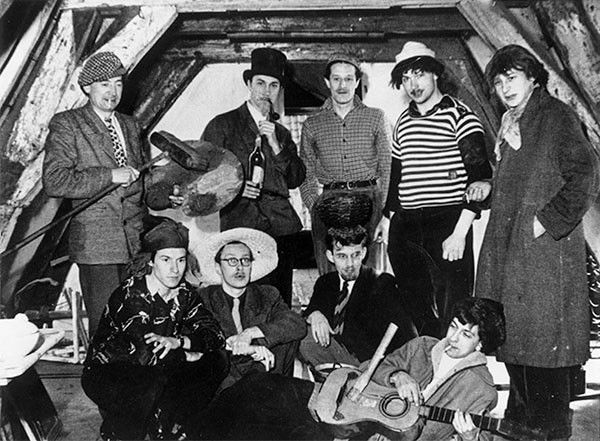 Cobra Art; a meeting of Cobra Artists
Cobra Art; a meeting of Cobra Artists
A number of the Cobra painting members, such as the Belgian Pierre Alechinsky, the Danes Asger Jorn en Carl-Henning Pedersen and the Dutch Karel Appel, Constant and Corneille, acquired great international fame as Cobra artists. The working methods and social ideas of this group would continue to develop even after 1951 and have a long after effect in many European countries.
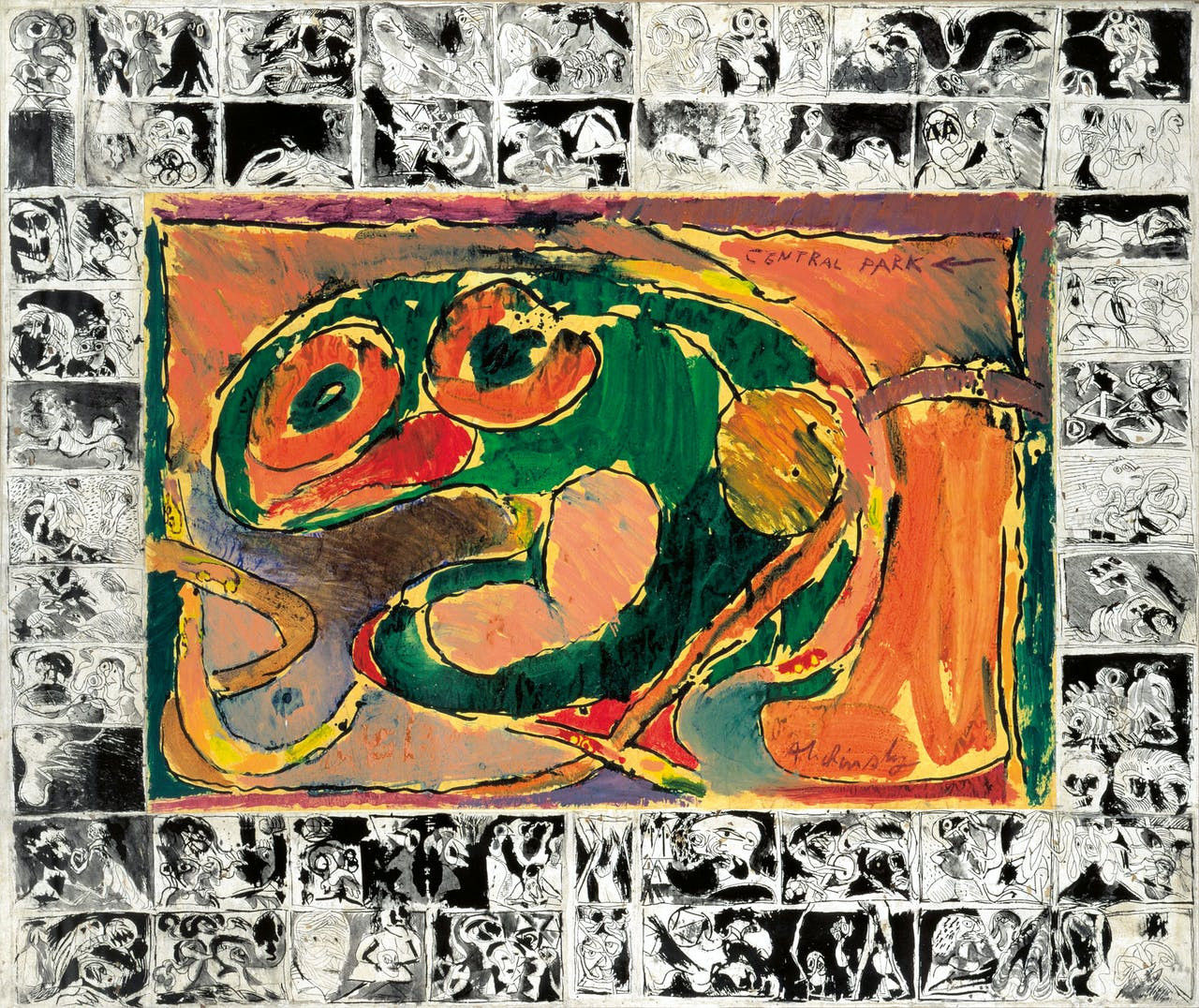 Cobra art; Central Park, 1965 by Alechinsky
Cobra art; Central Park, 1965 by Alechinsky
Principles of the Cobra Movement
The founders of Cobra differed quite a bit in their ideas about the meaning of Cobra. For some, that significance did indeed lie in Cobra's contribution to painterly developments. For others, Cobra meant absolute freedom, and for still others the collaboration between the members and the cross-fertilization between poets and painters was precisely the starting point. One thing is certain: there has never been a consensus about the meaning of Cobra. The character and dynamics of Cobra may well have been determined and enhanced by the contradictions and disagreements between the members.
Mentally ill and children
The Cobra artists longed to achieve a free and spontaneous mode of expression in their work, in which they wanted to return to the source of 'creation'. They were mainly inspired by drawings and paintings of children and the mentally ill. And also the own handwriting was regarded as the most personal expression and from there even the Eastern calligraphy. In addition, they saw the painters who worked in the early 20th centuryPablo Picasso, Paul Klee, Joan Miró and Wassily Kandinsky as great predecessors in modern art.
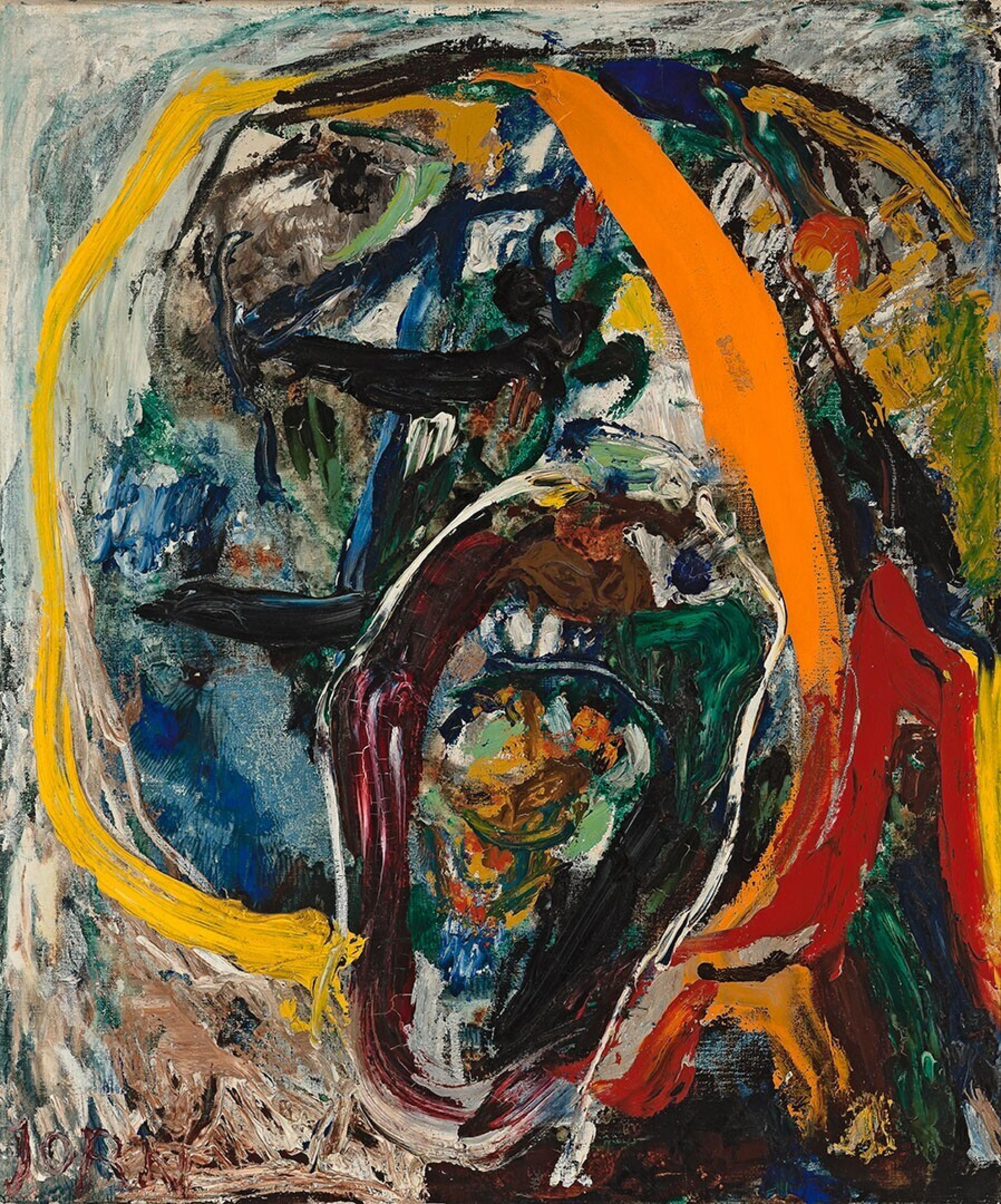 Cobra art; 'Plein Air with Noseless Horses', 1959 by Asger Jorn
Cobra art; 'Plein Air with Noseless Horses', 1959 by Asger Jorn
Art for and by everyone
The Cobra method was based on the ideas of Karl Marx. The theorists of the Cobra group (Jorn, Christian Dotremont and Constant Nieuwenhuys) focus on a new society in which art would not only be for everyone but also be made by everyone. Once the aesthetic norms of class society were thrown off, the "natural urge for expression" could break loose and allow an all-encompassing folk art to blossom. Art and life would become one. The theorists believed that with this method and based on their Marxist vision, they would open the way for the art of a coming society. In it everyone would have the opportunity to express themselves creatively, which would result in a new folk art.
Despite the opposition of the group's theoreticians, a 'Cobra language' or style arose within the core of this multidisciplinary group, especially among the painters, through mutual influence. This 'language' continued to develop after the end of the movement and had great international influence. Cobra's utopian social ideas were also continued in new movements.
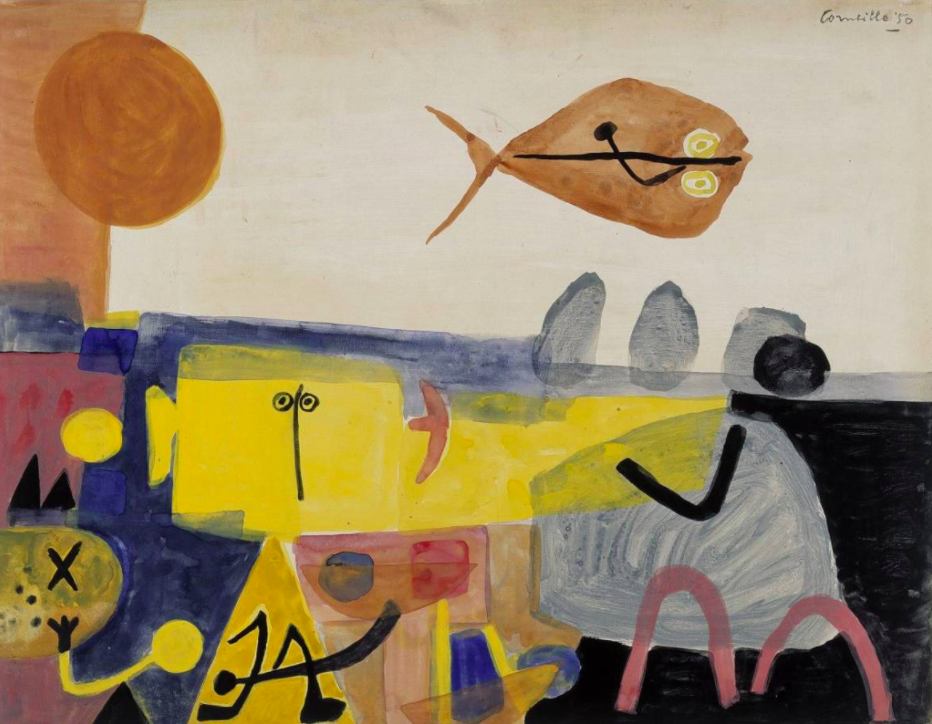 Cobra artwork by Corneille, Vis, 1950
Cobra artwork by Corneille, Vis, 1950
Surrealism and the 4 elements
Surrealism was also of fundamental importance to Cobra, although people opposed it at the same time. For example, in the first issue of Cobra, Jorn pointed out that Cobra substituted experiment and spontaneity for the 'psychic automatism' of surrealism. Some found confirmation of their method, in which they surrendered to the material they were working on, in the theories of the French philosopher-psychologist Gaston Bachelard, who identified the four elements (fire, air, water, earth) as the great source for human inspiration had indicated.
The typical characteristics of Cobra art
Cobra is mainly associated with colorful, expressive-spontaneous painting that has had an influence for a long time. CoBrA has a few distinct characteristics. The paintings always consist of cheerful and bright colours. Usually the colors are unmixed. This makes the paintings stand out. The aim of the artists is to create a humorous and cheerful whole.
The painting style of the Cobra can be roughly divided into two parts. Either they made an image with clear lines so that the figures could be clearly seen, or the lines are unclear and very confused. By creating a muddled, abstract image, each individual sees something different in the work.
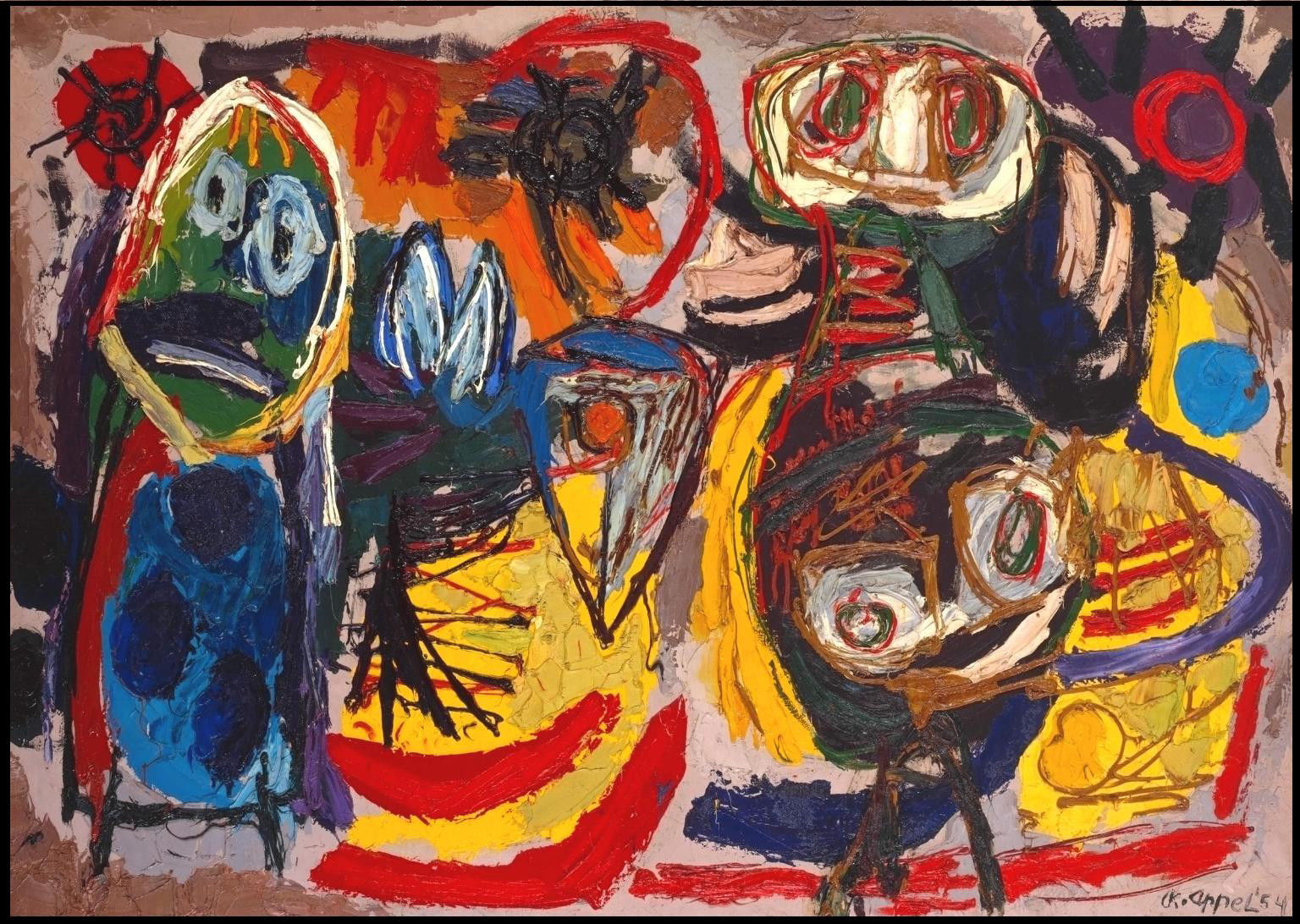 Cobra art; 'People, Birds and Sun 1954 Karel Appel'
Cobra art; 'People, Birds and Sun 1954 Karel Appel'
The artists were often inspired by folk art, myths, nature and children's drawings. The works of art often consist of masks, fantasy figures and animals. The artists often start painting without really knowing what the end result would look like
For many CoBrA supporters, Juan Miró was also a great example. Because of his playful way of drawing, he created a childlike and cheerful effect. Cobra art in the Netherlands
The Cobra artists painted directly and spontaneously. Like children, they wanted to work without a preconceived plan and with a lot of imagination and color. They rebelled against the rules of the art academy and strived for a casual art. They also tried out all kinds of materials. The experiment came first. The Danish Cobra artists were already experimenting well before the war.
Cobra in the Netherlands
On July 16, 1948, Constant, together with Karel Appel and Corneille, among others, founded the 'Nederlandse Experimentele Groep', which became the Cobra group on November 8, 1948. The Dutch members, Karel Appel, Corneille and Constant, would subsequently determine the face of post-war Dutch painting for several decades. Together with Constant, Anton Rooskens, Eugène Brands, Theo Wolvecamp and Jan Nieuwenhuis, they founded the Experimental Group in July 1948.
The point of reference would henceforth be the reference point, not tradition, but man in his most pure and original form, without the ballast of the cultural past. All forms of non-figurative experiment were possible. Young Dutch poets, including Lucebert, joined. The director of the Stedelijk Museum, Willem Sandberg, was their major promoter.
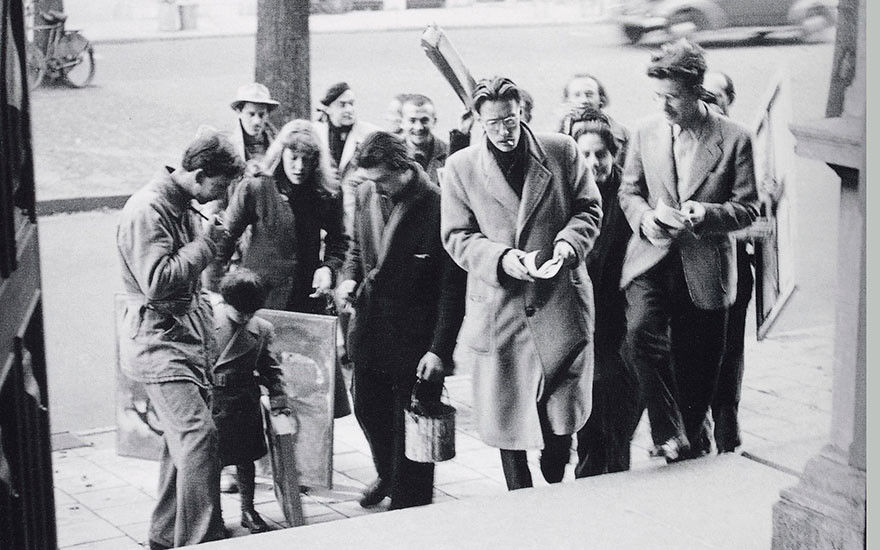 Cobra artists enter the Stedelijk Museum in Amsterdam
Cobra artists enter the Stedelijk Museum in Amsterdam
Appel and Corneille both searched for a new formal language, independent of pre-war artistic conventions and traditions. In 1947 they spent some time in Paris. Appel got to know Jean Dubuffet's Art Brut there, as well as the paintings of the mentally ill that he saw at an exhibition in the St. Anne asylum. The spontaneity and primal power that spoke of this work gave him inspiration. Shortly afterwards, the first human-animal creatures with large heads and questioning eyes appeared in his work, which made the Cobra language so recognizable.
 Cobra artist Karel Appel in his studio
Cobra artist Karel Appel in his studio
Constant was the man of international contacts. In 1946 he had met the Danish experimental artist Asger Jorn in Paris, under whose influence he started painting fantasy animals and mythical creatures. Jorn had contacts with Belgian avant-garde painters, including Christian Dotremont. In November 1948 Constant, Appel and Corneille traveled to a conference in Paris with experimental Belgians, Danes, French and Czechs. The aim was to discuss the situation of the avant-garde in these countries. In the following years there was a feverish collaboration, with the international CoBrA exhibition in Amsterdam's Stedelijk Museum being the first clear manifesto in 1949. Growing disagreements over matters of principle caused the group to disband in November 1951.
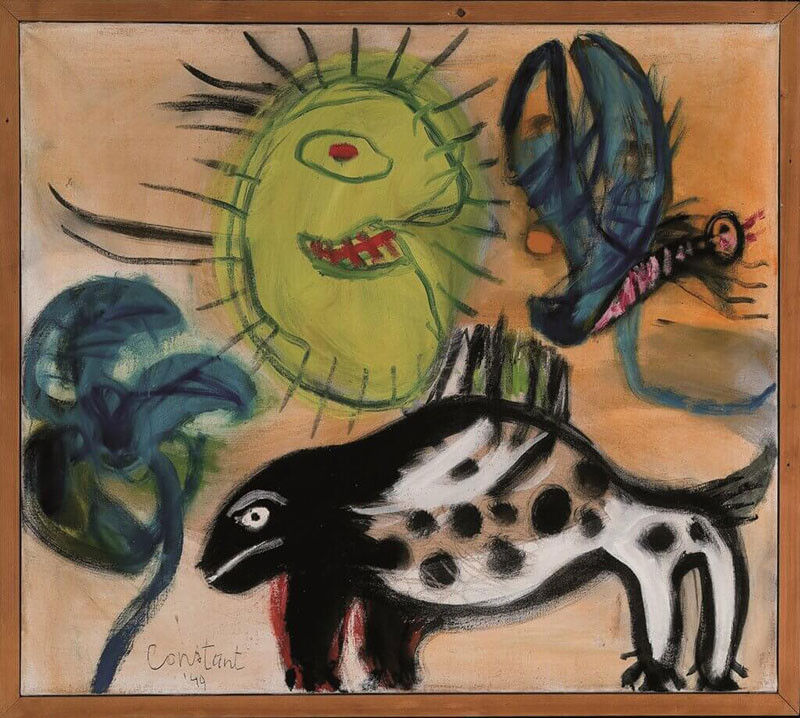 Cobra art; Cash Nieuwenhuis, Fauna, 1949
Cobra art; Cash Nieuwenhuis, Fauna, 1949
Only in the early sixties of the twentieth century, when some former Cobra members began to profile themselves internationally, only occasionally using the term Cobra, did the movement as such become more widely known without people now knowing exactly what it entailed. Its history has since been dug up from the most recent past.
Well known Cobra Artists
Here is a summary of the most important Cobra artists from the different countries. From Denmark came: Asger Jorn, Egill Jacobsen, Carl-Henning Pedersen, Henry Heerup, Else Alfelt, Ejler Bille and Mogens Balle. Karel Appel, Constant, Corneille, Eugène Brands, Anton Rooskens, Theo Wolvecamp, Jan Nieuwenhuys, Lucebert and Jan G. Elburg came from the Netherlands.
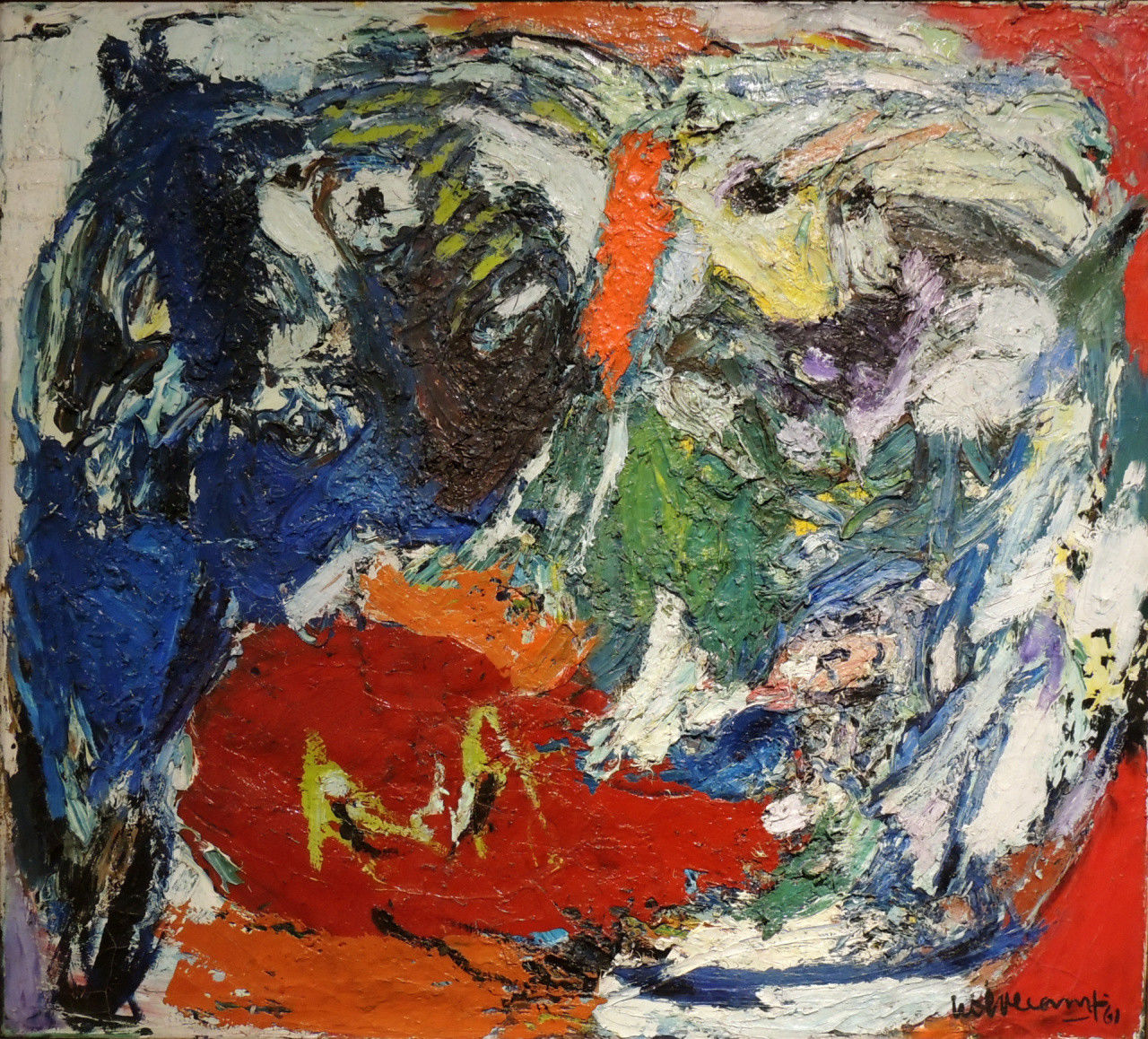 Cobra art; The Scapegoat, 1961 by Theo Wolvecamp (for sale via Gallerease)
Cobra art; The Scapegoat, 1961 by Theo Wolvecamp (for sale via Gallerease)
Viewing Cobra artworks
All over the world, but especially in many European countries, work by Cobra artists was purchased by the museums and by many private collectors. Major Cobra collections are located in the Netherlands in the Cobra Museum voor Moderne Kunst in Amstelveen and in the Museum van Amsterdam and Stedelijk Museum Schiedam.
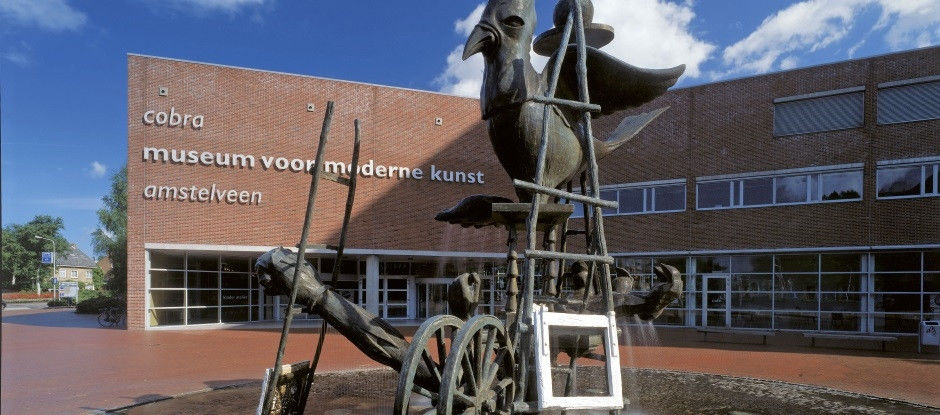 The Cobra museum in Amstelveen
The Cobra museum in Amstelveen
In Denmark Cobra art can be viewed in the Museum Jorn in Silkeborg; the Nordjyllands Kunstmuseum in Aalborg; in the Statensmuseum for Kunst and in the Arken Museum of Modern Art both in Copenhagen and also the Louisiana Museum of Modern Art in Humlebæk.
In Belgium Cobra art can be admired in the Museum voor Moderne Kunst, part of the Royal Museum of Fine Art Belgium, Brussel; in Germany there is the Kunsthalle van Emden and in de US in the Museum of Art (MOA/FL), Fort Lauderdale in Florida.
Cobra artworks for sale
If you are curious which Cobra art is for sale, you can look here at Gallerease, a collection of Cobra art offered by renowned galleries.
If you want to see which art is for sale by specific Cobra artists, see the following Cobra artists on Gallerease: Karel Appel, Corneille, Constant, Anton Rooskens, Eugène Brands, Theo Wolvecamp, Lucebert and Pierre Alechinsky
In the header a detail of a work by Cobra artist Carl-Henning Pedersen, Star Landscape from 1951, see also below for the complete image.
